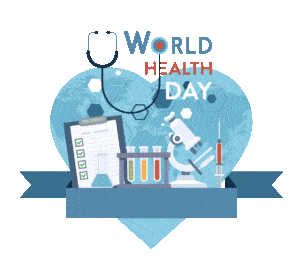World Health Day is celebrated annually and draws attention to important health topics across the globe, both in the public sector and at home. This year’s celebration of World Health Day recognizes the 75th  anniversary of the World Health Organization and encourages a theme of “Health for All.”
anniversary of the World Health Organization and encourages a theme of “Health for All.”
In today’s professional environment, there are unique ways businesses can help their employees focus on health. In fact, companies that focus on health can see benefits to their bottom line – including enhanced productivity, strengthened company culture, lowered burnout, and reductions in turnover.
Ergonomic Safety
Musculoskeletal disorders (MSDs), also known as an ergonomic injury, can affect the muscles, nerves, blood vessels, ligaments and tendons, according to the Occupational Safety and Health Administration. Workers can be exposed to ergonomic-related risk factors from performing their day-to-day tasks, such as sitting, heavy lifting, bending, reaching, pushing/pulling heavy loads, and performing repetitive tasks.
Ergonomic injuries can include strains and sprains, carpal tunnel syndrome, tendonitis, and back injuries. These injuries can be reduced at work by promoting ergonomic health as part of an overall safety program, including encouraging employees to stretch and flex each day, conducting ergonomic evaluations, maintaining observational safety, ensuring proper use of equipment. Companies can also consider implementation of artificial intelligence wearables to evaluate and improve worker behaviors.
Mental & Emotional Health
More organizations are realizing the benefits of employee health and the prevention of burnout. Initiative-based and physical health programs can help keep employees safe, healthy and motivated.
Businesses can encourage employees to participate in anti-burnout initiatives that encourage physical and mental breaks through the implementation of free resources and events such walking or running clubs and meditation or therapy sessions. Companies should also consider providing an allowance to assist in meeting these physical and mental health-related goals. This can cover some of the costs for gym memberships, exercise equipment, fitness streaming services, or wearable applications.
Return to Work Programs
Even with proactive measures in place, injuries and accidents can still occur at work. A successful return to work program can help employees feel engage and prioritized as they focus on health and recovery.
After an injury, workers may need physical therapy, occupational therapy or other rehabilitation before they are able to fully function in their jobs again. But rather than not working at all, they may be able to perform light-duty work for several weeks or months until they can return to their full job demands.
Early return-to-work programs provide opportunities for all parties — the employer, employee and medical providers — to coordinate and identify accommodations, modifications or light-duty work, and place workers in these modified assignments. Workers who perform light-duty activities while recovering are generally more optimistic about their health and more likely to return to work full-time.
Learn More
The World Health Organization has several resources available for businesses to recognize and celebrate World Health Day. To learn more, visit the World Health Day website.



